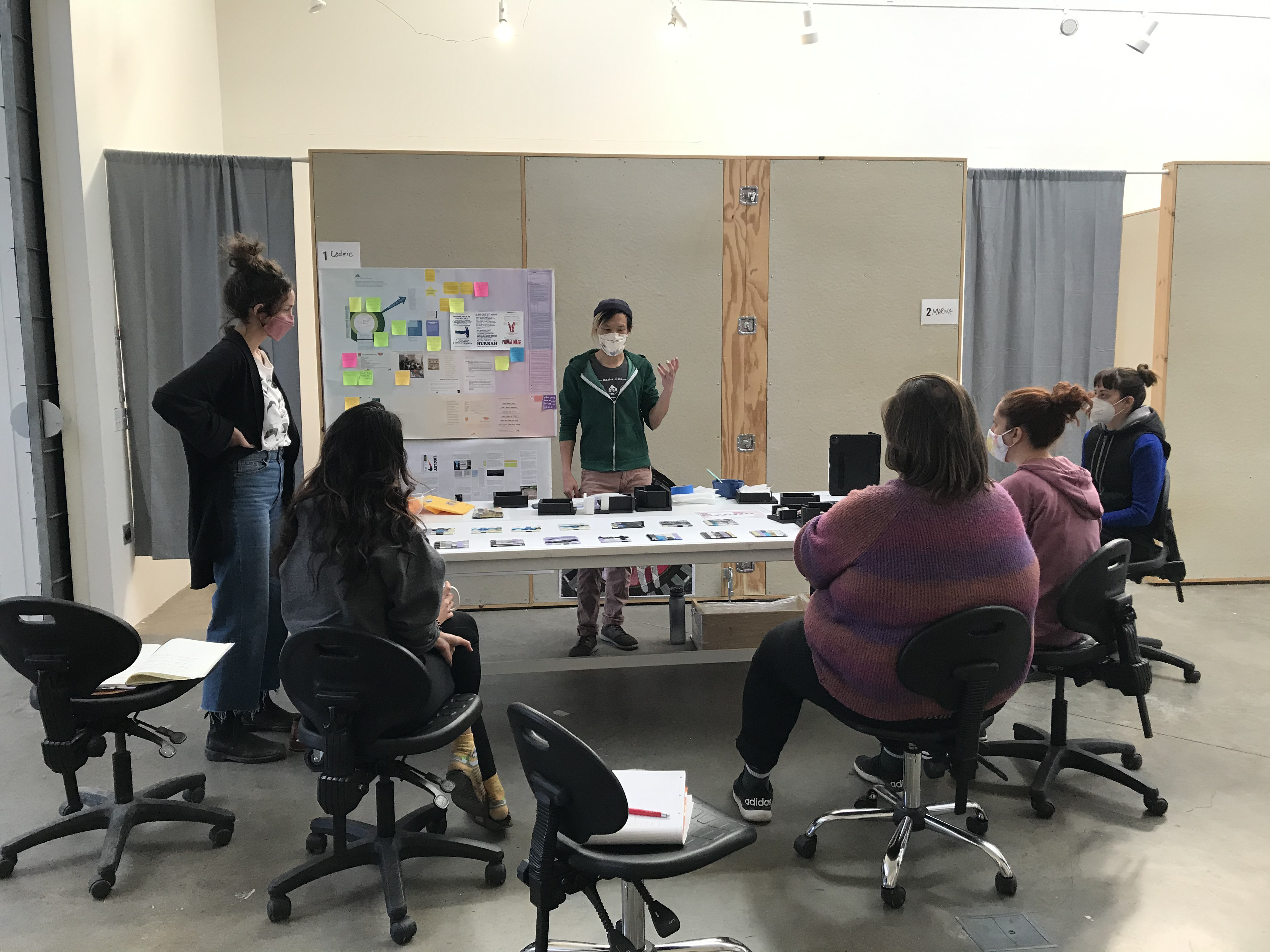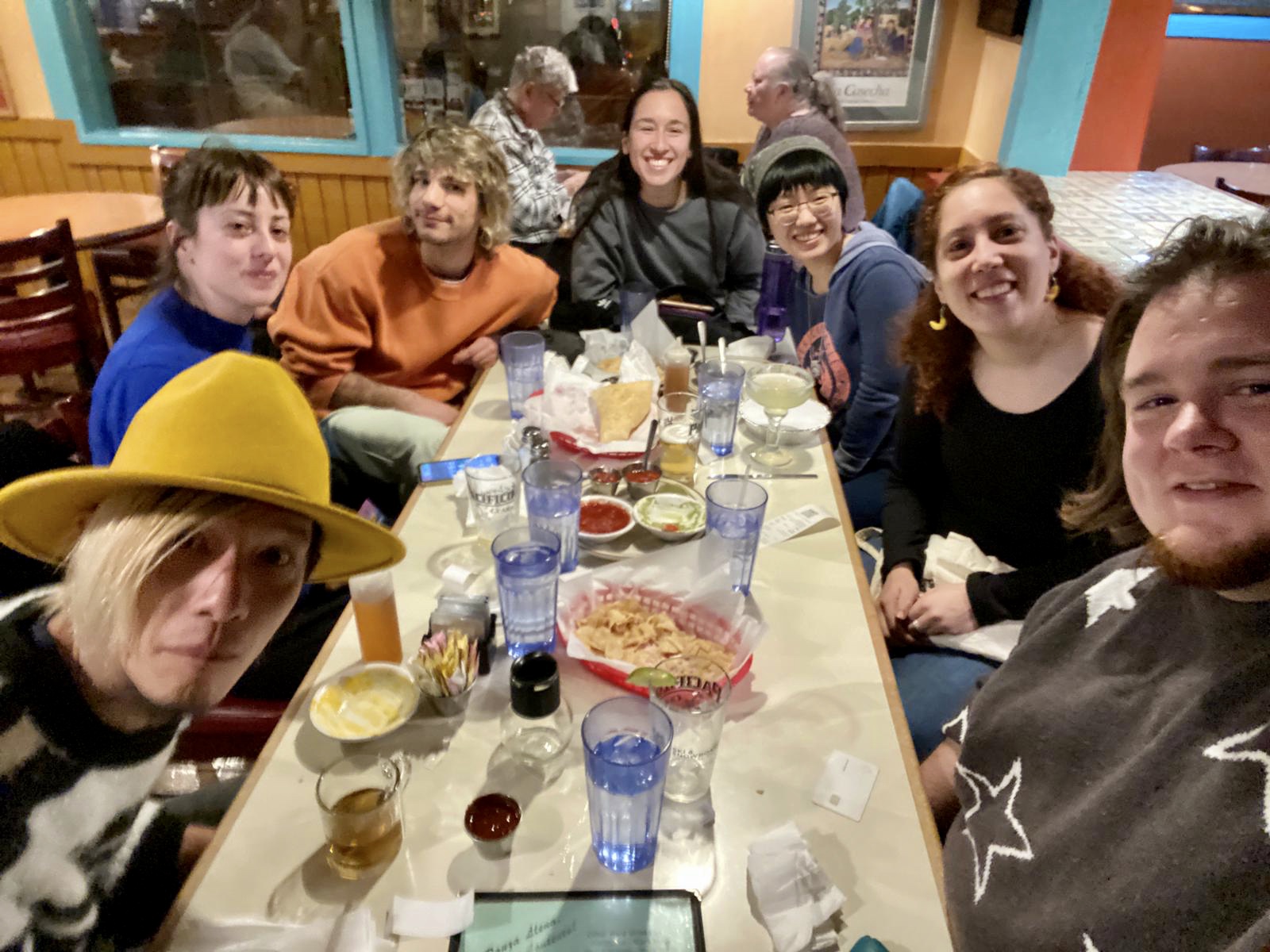Artists
Photo Credit: NIU Chun-Chiang
Eugene Yuchin Chen
Eugene Yuchin Chen
| Location | USA / Santa Fe |
|---|---|
| Residency | Santa Fe Art Institute (SFAI) |
| Year of the Grant | 2020 |
| Personal Website | Eugene Yuchin Chen's Personal Website |
Artist Statement:
[Personal work]
1. Robust discussions: My works mainly focus on contemporary predicaments, such as gender and diaspora. Participants in the program came from a variety of regions, including Greece, Egypt, Mexico, Hong Kong, and Philippines. During the residency, over a dozen participants had sufficient time to develop and discuss about their works.
2. Reference & archives: One staff, Bing-hong Ma, is an Asian American. He recommended recently popular American works. Examples include On Earth We're Briefly Gorgeous and Minor Feelings. Those works are beautiful and inspiring to my perspectives.
3. Food culture: During the three months of residency, we celebrated two birthdays and Lunar New Year. We talked about street food culture and family stories with each other.
[Cultural exchange]
1. Stories about Taiwan: At a bookstore in Santa Fe, Green Island by Shawna Yang Ryan was placed at a prominent location. I had a rare opportunity to introduce White Terror in Taiwan to other artists. In fact, many countries with colonial and/or authoritarian past had similar experiences.
2. Cultural connections with Taiwan: Bing-hong Ma planned to recreate bamboo structures from his ancestors at Chaozhou. He asked if I knew any related resources. Unfortunately, I had never participated in local residency programs. However, I am certain that similar techniques were adopted by scaffolding workers in Taiwan, and similar buildings are available at Sanying Community. If artistic techniques, resources, and funding in Taiwan are intentionally aggregated, more artists may be invited to Taiwan to exchange ideas.
3. Composition in residency programs: While more spaces in Taiwan have opened up to artist residency programs in recent years. However, open calls are often limited to one person. Artist composition is a feature at Santa Fe. Different themes each year bring artists closer to consensus. When Taiwan operates spaces in the future, it is possible to learn from Santa Fe, and ensure artists can discuss with each other.
[Note and Suggestion]
1. Personal safety: After The Santa Fe University of Art and Design officially closed in 2017, many homeless people find and stay at the former campus. Due to the pandemic, everyone worked remotely. Many people assumed the center in not operating properly and peeped through blinds for several times. I noticed multiple times that unknown people crossed our fences and chased after smoking artists. I personally carried whistles all the time. Other artists also purchased pepper sprays before their road trips in America alone.
2. Print English invitation and apply visas: People must apply official visas, instead of using ESTA. I was kept at the customs for two hours at SFO for not having an English invitation to explain my purpose of visit. During the period, I couldn’t use my phone to search for information. Eventually, I presented English accommodation information from the institution to clear the customs.
3. Climate: Due to desert climate and floor heating, everyone (including Americans) experienced dry eyes, sore throat, nose bleeding, and waking up in the middle of night. Drink more water, use humidifiers, and nose sprays to relief the symptoms.
4. Transportation: It takes two to four hours from the institution to ABQ airport. When I arrived at the airport late night, there were no counter services. Even though it is possible to reserve taxi services, Lyft and Uber might not be able to offer services if flights are delayed. When taking taxi, do not follow instructions in the manual. It’s suggested to search “Sante Fe Art Institute” on Google Maps. The secondhand car at the residency site is barely useable. It costs around US$30 per day to rent a car. Roads in the mountains might be closed due to snow, so driving carefully is crucial. There are two bikes at the institution. But many roads in Sante Fe are slopes, so it isn’t much easier than walking.
5. Mental/Physical health: If people have seasonal depressions, please prepare online consultation services in advance. As insurance policies are complicated in America and English consultations may be challenging, it is suggested to prepare in advance in Taiwan. For gym, Defined Fitness is the top option, with warm water pool and stable indoor temperature. When registering for membership, specify your staying period may receive special offers.
Author: Eugene Yuchin Chen
Edited: Brix



